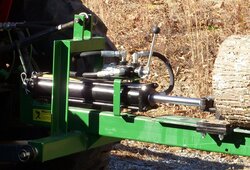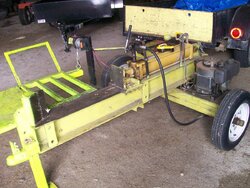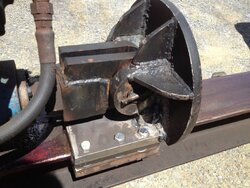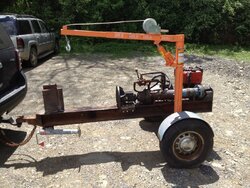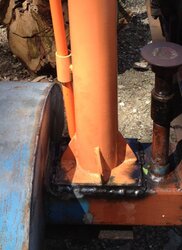B
BrianK
Guest
I made the mistake of lending my log splitter to a friend who is not mechanically inclined. One of the nuts on one of the two hold down straps holding the hydraulic cylinder to the I-beam vibrated off while he was using it, and one came lose on the other strap. He didn't realize anything was wrong and kept using it. It tore apart the pusher plate. That was a poor/weak design anyway and there was never anything attaching the rear of the hydraulic cylinder to the I-beam.
Here is the original configuration:

I took it to a friend who fabricated a new pusher plate:
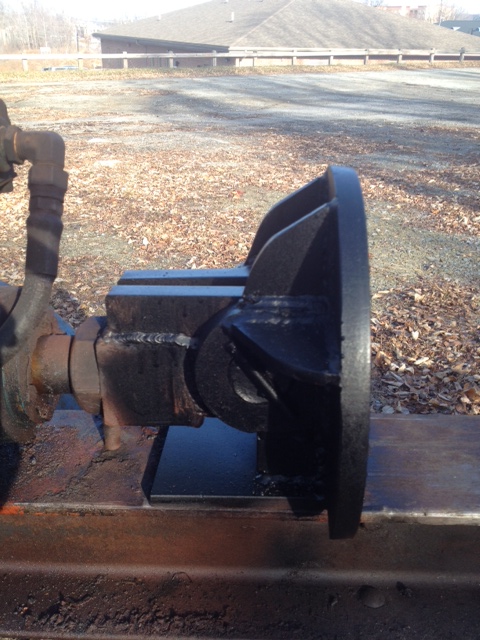
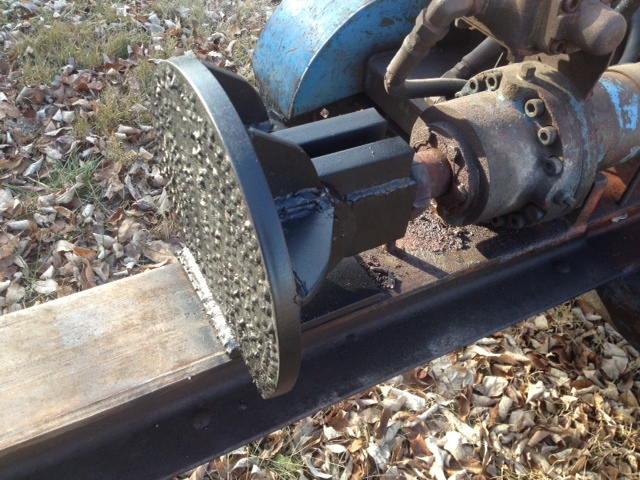
I had shown him several photos of typical pusher plate assemblies and how they need to wrap around the I-beam for proper function and safety. Here is a typical example which I showed him:
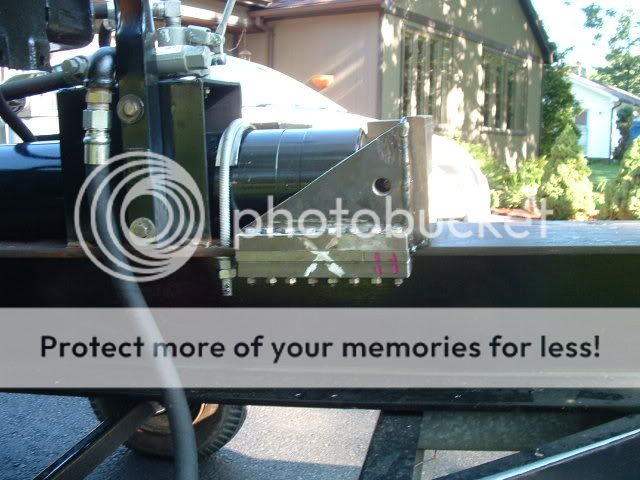
I don't know if he forgot, thought that was overkill, or was being lazy. However, my hydraulic arm is pretty well cradled on the I-beam:
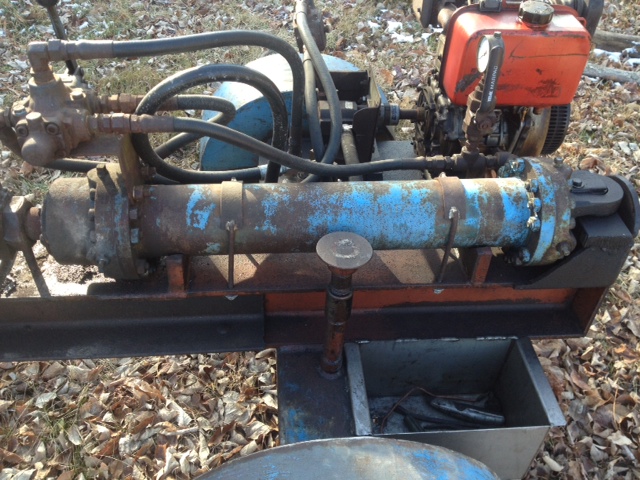
and he did a decent job of fabricating a hydraulic arm mount where previously nothing held it in the rear:
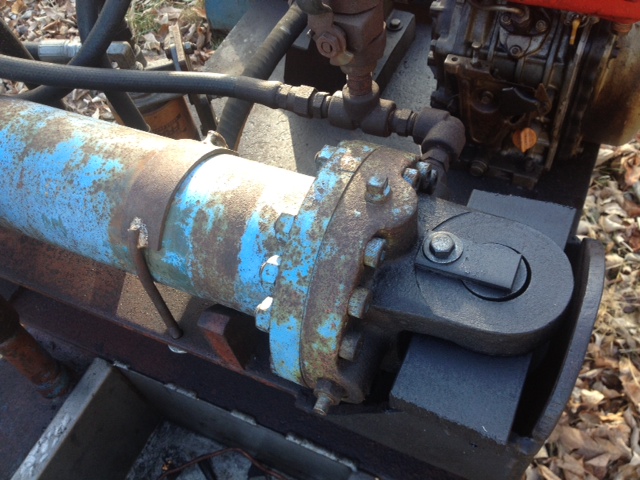
So the question:
Is it safe to use this with the pusher plate the way it is configured now in the second photo above, or should I ask him to revise the pusher plate to something like the fourth photo above with it wrapping around the top of the I-beam?
Here is the original configuration:
I took it to a friend who fabricated a new pusher plate:


I had shown him several photos of typical pusher plate assemblies and how they need to wrap around the I-beam for proper function and safety. Here is a typical example which I showed him:

I don't know if he forgot, thought that was overkill, or was being lazy. However, my hydraulic arm is pretty well cradled on the I-beam:

and he did a decent job of fabricating a hydraulic arm mount where previously nothing held it in the rear:

So the question:
Is it safe to use this with the pusher plate the way it is configured now in the second photo above, or should I ask him to revise the pusher plate to something like the fourth photo above with it wrapping around the top of the I-beam?



